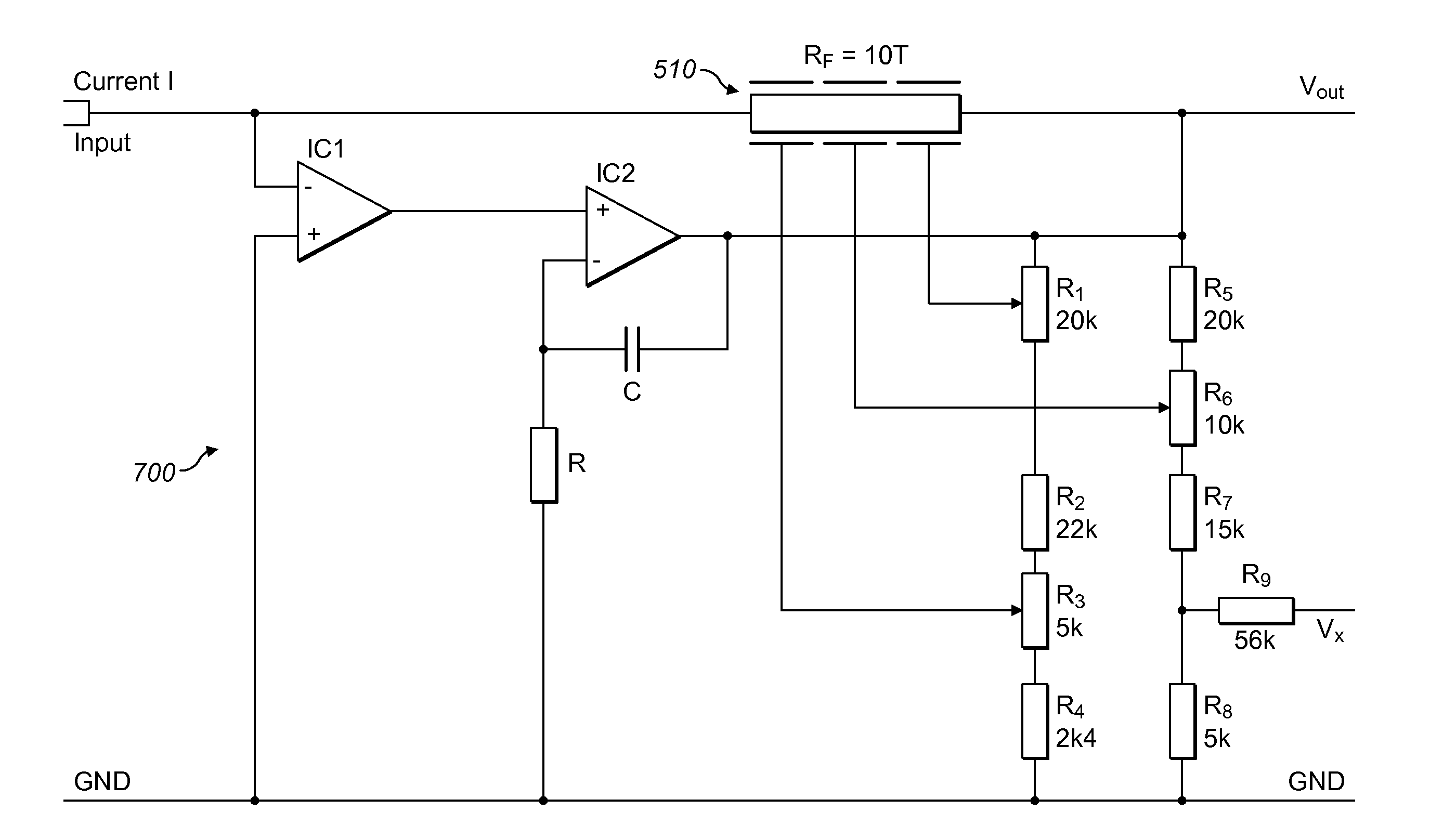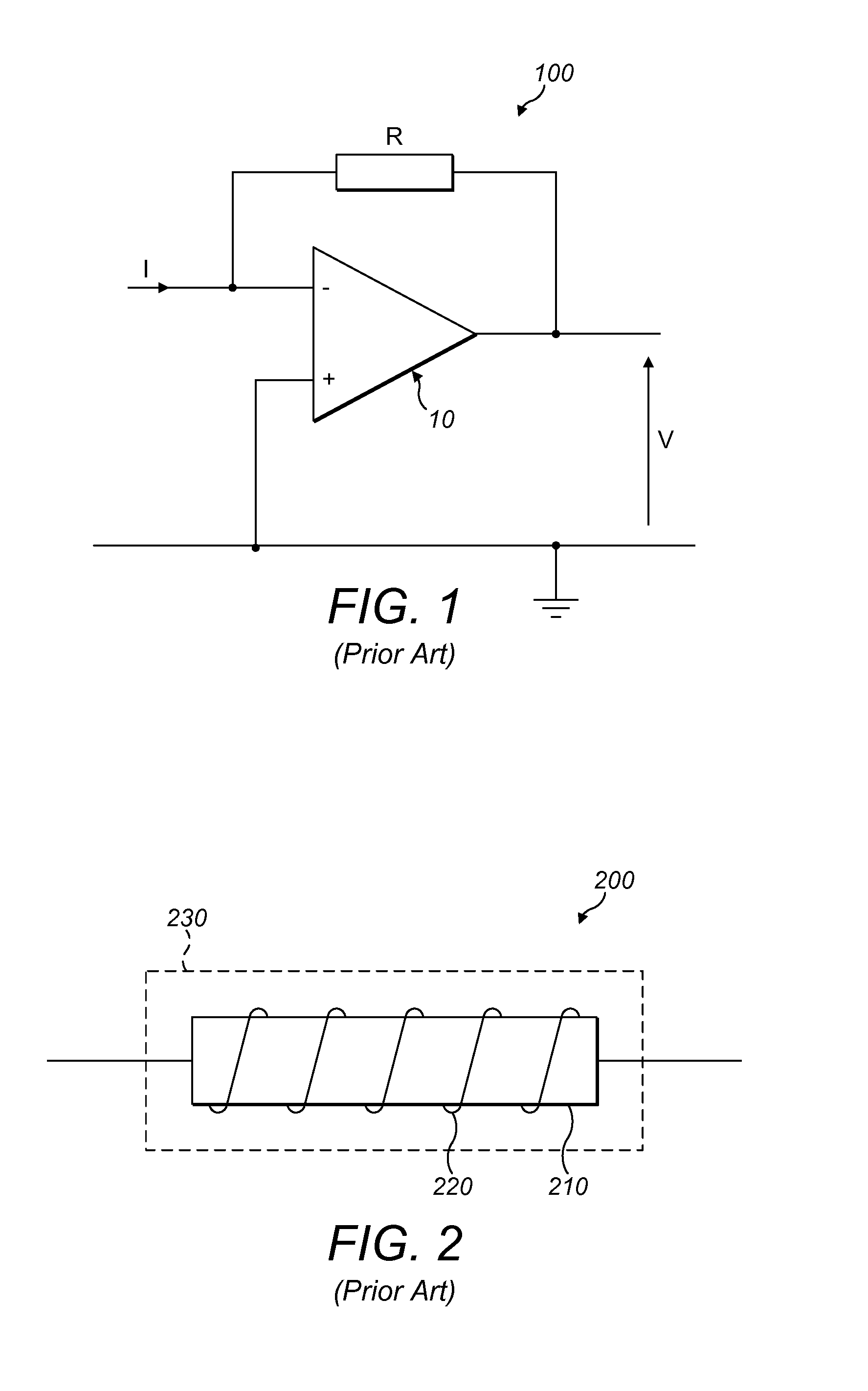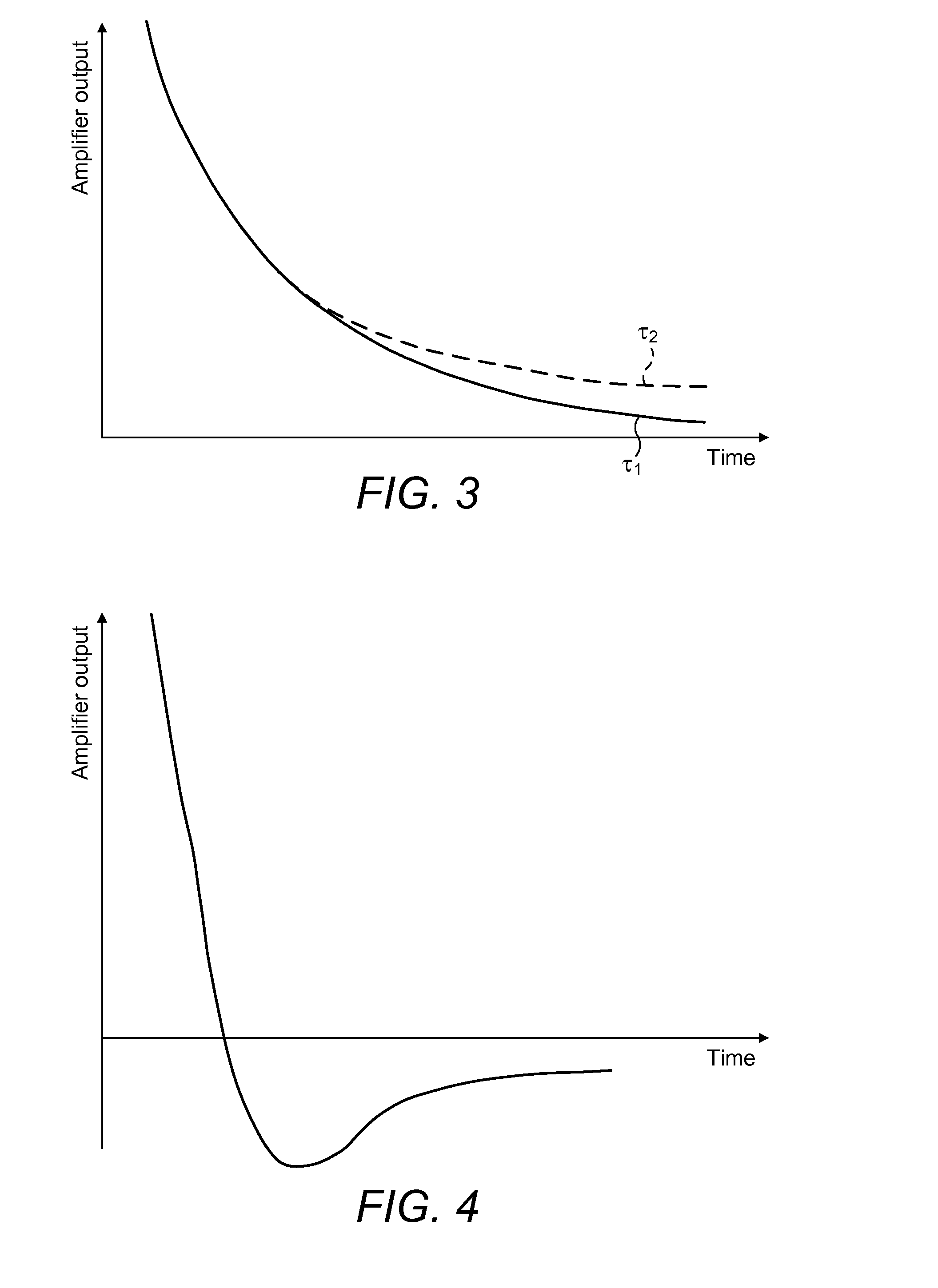Transimpedance Amplifier
a technology of transimpedance amplifier and amplifier, which is applied in the direction of instruments, particle separator tube details, separation processes, etc., can solve the problems of long charge-up duration of current superimposed, particularly demanding requirements occur quite frequently, and achieve the effect of minimising overshoot and undershoot and minimising the settling time of the amplifier
- Summary
- Abstract
- Description
- Claims
- Application Information
AI Technical Summary
Benefits of technology
Problems solved by technology
Method used
Image
Examples
Embodiment Construction
[0093]An ‘ultrahigh value resistor’ may be a resistor with a resistance of approximately 1 TΩ (i.e. 1E12Ω) or more. For example, it may have a resistance of 1-10 TΩ, such as 1 TΩ, 3 TΩ, 8 TΩ or 10 TΩ, or a resistance of 1-100 TΩ, such as 10 TΩ, 20 TΩ, 25 TΩ, 40 TΩ, 60 TΩ, 70 TΩ, 90 TΩ, or 100 TΩ, or a resistance of 10-100 TΩ, such as 50 TΩ or 100 TΩ. Ultrahigh value resistors are of particular use as feedback resistors in transimpedance amplifiers used to measure very low currents, for example in the order of femto-amps (fA), i.e. 1E-15A.
[0094]FIG. 5 shows a transimpedance amplifier circuit 500 comprising an operational amplifier IC1, a resistor assembly 510 comprising an ultrahigh value feedback resistor RF coupled between the output of the operational amplifier IC1 and the inverting input of the operational amplifier IC1, a first voltage divider comprising resistors R1, R2, R3 and R4 and a second voltage divider comprising R5, R6, R7 and R8. Resistors R1, R3 and R6 are variable re...
PUM
 Login to View More
Login to View More Abstract
Description
Claims
Application Information
 Login to View More
Login to View More - R&D
- Intellectual Property
- Life Sciences
- Materials
- Tech Scout
- Unparalleled Data Quality
- Higher Quality Content
- 60% Fewer Hallucinations
Browse by: Latest US Patents, China's latest patents, Technical Efficacy Thesaurus, Application Domain, Technology Topic, Popular Technical Reports.
© 2025 PatSnap. All rights reserved.Legal|Privacy policy|Modern Slavery Act Transparency Statement|Sitemap|About US| Contact US: help@patsnap.com



